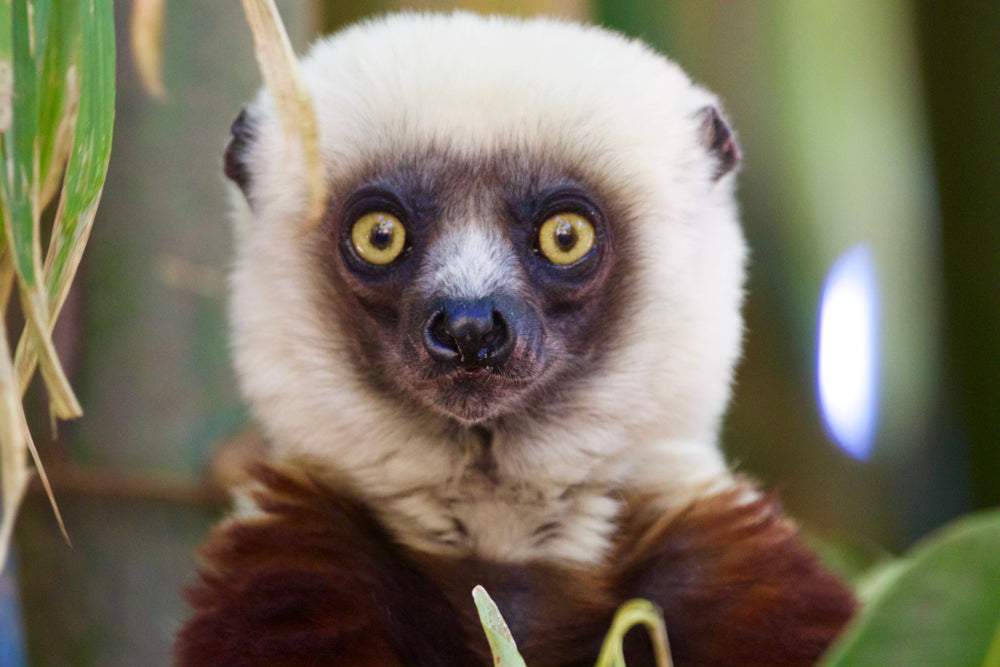Your Cart is Empty
To celebrate World Lemur Day, we’re taking a look at the wonderful (and slightly peculiar) primates of Madagascar.

© Shutterstock
One of the most famous species of lemur (thanks to King Julien!), ring-tailed lemurs live in groups of between six and 30 individuals, called troops, and are led by one dominant female. Their striking striped tails can grow up to 56 centimetres long and are used for balance and to communicate with one another. Unlike some other primates, ring-tailed lemurs are unable to grip with their tail. But although they can't use their tails to swing from branch to branch, they can use their friend's tail as a lively swing – just like these black-and-white ruffed lemurs:

© Wolfgang Kaehler/Alamy Stock Photo

© Shutterstock
Red ruffed lemurs can only be found living in tropical lowland forests in a small part of north-eastern Madagascar. Their long, rusty red, woolly fur coat keeps them warm, as their forest home can often be wet and is sometimes chilly. These fluffy charmers have six teeth packed close together, which are used like a comb to groom each other. Red ruffed lemurs also have the ability to communicate with another species, the black and white lemur – they can understand their alarm calls.

© Shutterstock
The indri is the largest species of lemur on the planet, and can grow as big as a human child! These arboreal primates spend the majority of their time in trees, foraging for food such as fruit, leaves, flowers and other forms of vegetation. Indri are part of the leaping lemur family, known as Indridae. Unlike their primate cousins, theindri has a very short tail – less than 5cm in length.

© Shutterstock
Sifakas got their unusual name as a result of their unique call, which sounds like “shif-auk”. They can be found living in small family groups of between three and 10 individuals, and it’s thought that only one female in every group breeds. Like many other species of lemur, these primates spend the majority of their time in trees. However, quite unusually, they remain upright at all times and use their powerful hind legs to jump between trees – they have the ability to clear distances of more than nine metres! Sifakas are famous for the two-legged sideways hops they do to move across the forest floor.

© Shutterstock
They may not look like lemurs, or any other animal for that matter, but aye-ayes are one of the rarest species of primate and are related to apes, chimpanzees and humans! They’re uniquely equipped with a long middle finger, which they use to tap on trees to encourage wood-boring insects to move. These clever primates use their large ears to listen for these movements before using their pointy clawed finger to fish out the grubs from under the bark. This type of hunting is known as echolocation.

© Minden Pictures/Alamy Stock Photo
World Lemur Day seeks to raise awareness of the value of these Madagascan primates in their natural habitats among scientists and the general public. Sadly, all of the species mentioned in this article are (at the time of posting) listed as endangered or critically endangered (the highest threat level) on the International Union for the Conservation of Nature’s Red List.
Comments will be approved before showing up.
Our Animal Besties writing contest from 'Nature's Best Buddies' issue brought in a flood of heartwarming, imaginative and often hilarious tales of unexpected friendships. From swans befriending capybaras to chickens bonding with foxes, your entries were full of surprise, kindness and creativity. A h...
January’s JAWsome Creatures competition brought some of the most imaginative and fearsome designs we've ever seen! From predators with sabre-like teeth to extraordinary beaks with unique feeding tricks, your entries were truly jaw-dropping. A huge thank you to everyone who took part – we loved seeing your wild and wonderful creations!
The Wildlife Photographer of the Year competition, produced by the Natural History Museum, never fails to amaze, and 2024 was no exception. Thousands of incredible images were submitted, but only a few made it to the People’s Choice Award.



